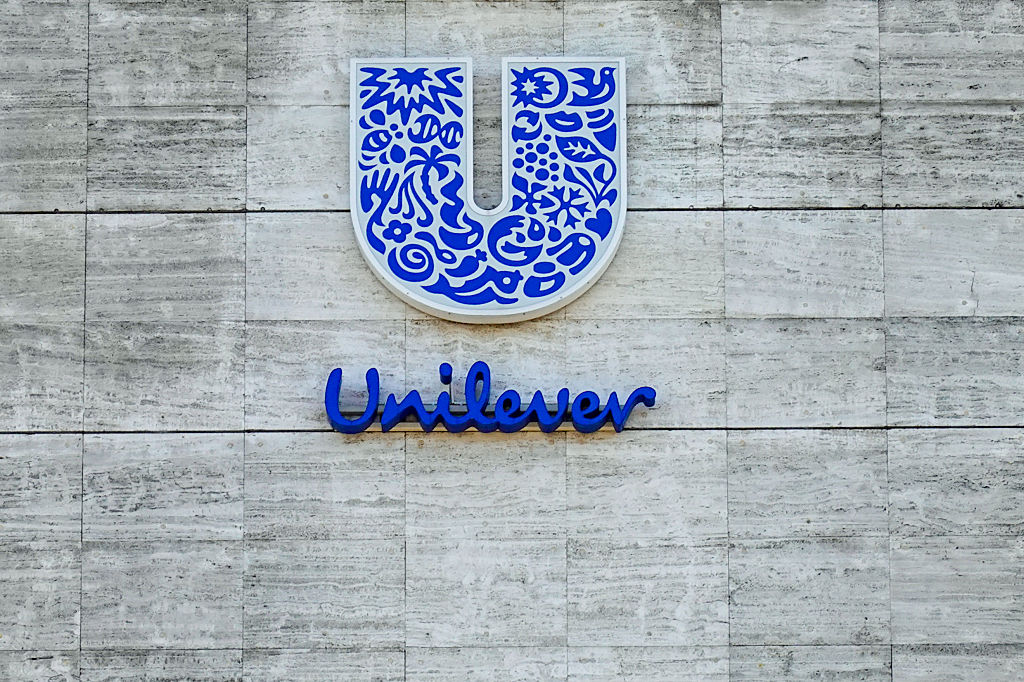How retail investors can gain exposure to Lloyd’s of London
It’s hard for retail investors to get in on the action at Lloyd’s of London. Here are some of the ways to gain exposure


The Lloyd’s of London insurance market is one of the City of London’s most interesting entities. Based at its iconic headquarters in the centre of the City, it’s often just referred to as Lloyd’s, and sits at the heart of the UK and indeed global insurance market. Lloyd’s isn’t an insurer itself. Instead, it’s an organisation that brings together all the parties in the market under one roof – the brokers, underwriters, capital providers and support staff. The Corporation of Lloyd’s regulates this market and its stakeholders.
Over the last five years, this market has become increasingly profitable. The prices paid by insurance buyers, known as premiums, have in some cases more than doubled. While losses from major events such as hurricanes have also increased dramatically, companies have tightened their standards, only writing business they expect to be profitable. As a result, the combined ratio of the Lloyd’s market has held comfortably below 90% (anything below 100% signals a profit, while anything above signals a loss). The combined ratio of Lloyd’s was 86.9% in 2024, up from 84% in 2023. It fell to 79.1% in the first quarter of 2025.
What’s interesting is that, to some extent, the market is still inefficient. Some of the unique policies written in the market (such as that covering Tom Jones’s chest hair) have no alternative market. That means underwriters can often earn super-normal profits.
MoneyWeek
Subscribe to MoneyWeek today and get your first six magazine issues absolutely FREE

Sign up to Money Morning
Don't miss the latest investment and personal finances news, market analysis, plus money-saving tips with our free twice-daily newsletter
Don't miss the latest investment and personal finances news, market analysis, plus money-saving tips with our free twice-daily newsletter
How to gain exposure to Lloyd's of London
Throughout much of its history, the capital used to back insurance policies underwritten by Lloyd’s was provided by wealthy individuals known as Names. Over the past few decades, as the sums involved have grown, Names have largely been replaced by corporate entities – the likes of Beazley (LSE: BEZ) and Hiscox (LSE: HSX) – but a small percentage of capital (around 8%) is still provided by smaller investors, often via so-called Limited Liability Vehicles (LLVs).
In theory, anyone can invest directly into the market, although Lloyd’s used to recommend a minimum of £350,000, and investors are advised to deploy no more than 10% of their assets into the market. In practice, anything less than £1 million isn’t going to be worth the cost, ruling out all but the wealthiest investors.
But there are other options to invest directly in this unique and highly lucrative market. Beazley and Hiscox both have some exposure to Lloyd’s, and Aim-listed Helios Underwriting (LSE: HUW) owns a portfolio of LLVs, mostly acquired from former Names active in the market. It’s one of the only ways smaller investors can buy direct exposure to Lloyd’s business.
Another way to buy into Lloyd's of London
A private-market alternative is Talisman Underwriting. Initially set up in the 1990s as a private company to allow Names to move their Lloyd’s exposure into a limited company, the business underwrote £48 million of capacity on Lloyd’s syndicates in 2025 (syndicates are similar to individual companies, which pool capital and resources to underwrite more business and achieve economies of scale).
Today, the company is open to new investors who want to invest in Lloyd’s, but don’t have the funds or perhaps the time to invest directly. As David Monksfield, who became a director of Talisman at its inception in 1997 and is responsible for the day-to-day running of the company, explains, the firm has exposure to 14 Lloyd’s underwriting syndicates offering diversification across businesses that are not otherwise available. Unlike traditional ways to invest in the market, investors can “get involved buying shares for cash as [they would with] any other company, with each share priced on net asset value”. Income is also paid out annually as a dividend, circumventing the age-old three-year accounting cycle that has historically been a feature of the Lloyd’s of London market for individual investors.
Lloyd's of London profits
In the past few years, the company, just like the broader market, has experienced explosive growth. “The 2022 result is 12.4% of capacity, and the current forecast for 2023 is a mid-point of 16.9% of capacity,” says Monksfield, referring to the standard metric of profitability for Lloyd’s, a profit given as a percentage of total underwriting capacity written. This excludes the contribution from so-called Funds at Lloyd’s, the capital used to support underwriting activity. Talisman focuses on risk reduction above all else and, to that end, owns mainly cash with a percentage of the portfolio managed by Ruffer. “Talisman has a focus on the downside and does not want a volatile investment portfolio that could go down in value just at the wrong time,” says Monksfield.
When it comes to the firm’s portfolio of syndicates underwriting business in the Lloyd’s market, Talisman focuses on seven core holdings, which Monksfield says have “excellent management and underwriting skills”. “These are businesses that know how to manage the cycle and, through normal trading conditions, should provide profits throughout the cycle,” he adds. “We have no intention of changing the policy that we have and that has led Talisman to exceed the Lloyd’s market average performance for most of the years it has been in existence since 1998.”
Talisman pays its investors with dividends, twice a year, from any profit earned from underwriting activity. As shares in the limited company are also tradeable (although highly illiquid), investors can also profit from any potential upside generated from asset-value growth. If the shares are owned for two years, they qualify for inheritance-tax business relief. While the company is set up and designed to help individuals build exposure to the Lloyd’s market without having millions to invest, the minimum investment is set at £100,000, a significant sum, but substantially less than the millions required to enter Lloyd’s individually. Crucially, the limited company structure also provides investors with a layer of limited liability.
Talisman isn’t going to be suitable for most investors, but as a way to buy into Lloyd’s it’s an interesting option for those investors with sufficient capital and the desire to take on such an investment.
This article was first published in MoneyWeek's magazine. Enjoy exclusive early access to news, opinion and analysis from our team of financial experts with a MoneyWeek subscription.
Get the latest financial news, insights and expert analysis from our award-winning MoneyWeek team, to help you understand what really matters when it comes to your finances.

Rupert is the former deputy digital editor of MoneyWeek. He's an active investor and has always been fascinated by the world of business and investing. His style has been heavily influenced by US investors Warren Buffett and Philip Carret. He is always looking for high-quality growth opportunities trading at a reasonable price, preferring cash generative businesses with strong balance sheets over blue-sky growth stocks.
Rupert has written for many UK and international publications including the Motley Fool, Gurufocus and ValueWalk, aimed at a range of readers; from the first timers to experienced high-net-worth individuals. Rupert has also founded and managed several businesses, including the New York-based hedge fund newsletter, Hidden Value Stocks. He has written over 20 ebooks and appeared as an expert commentator on the BBC World Service.
-
 Metals and AI power emerging markets
Metals and AI power emerging marketsThis year’s big emerging market winners have tended to offer exposure to one of 2025’s two winning trends – AI-focused tech and the global metals rally
-
 8 of the best houses for sale with beautiful fireplaces
8 of the best houses for sale with beautiful fireplacesThe best houses for sale with beautiful fireplaces – from a 15th-century cottage in Kent to a 17th-century palazzo in Oxfordshire
-
 Metals and AI power emerging markets
Metals and AI power emerging marketsThis year’s big emerging market winners have tended to offer exposure to one of 2025’s two winning trends – AI-focused tech and the global metals rally
-
 8 of the best houses for sale with beautiful fireplaces
8 of the best houses for sale with beautiful fireplacesThe best houses for sale with beautiful fireplaces – from a 15th-century cottage in Kent to a 17th-century palazzo in Oxfordshire
-
 King Copper’s reign will continue – here's why
King Copper’s reign will continue – here's whyFor all the talk of copper shortage, the metal is actually in surplus globally this year and should be next year, too
-
 The coming collapse in the jobs market
The coming collapse in the jobs marketOpinion Once the Employment Bill becomes law, expect a full-scale collapse in hiring, says Matthew Lynn
-
 Luana Lopes Lara: The ballerina who made a billion from prediction markets
Luana Lopes Lara: The ballerina who made a billion from prediction marketsLuana Lopes Lara trained at the Bolshoi, but hung up her ballet shoes when she had the idea of setting up a business in the prediction markets. That paid off
-
 British blue chips offer investors reliable income and growth
British blue chips offer investors reliable income and growthOpinion Ben Russon, portfolio manager and co-head UK equities, ClearBridge Investments, highlights three British blue chips where he'd put his money
-
 Coreweave is on borrowed time
Coreweave is on borrowed timeAI infrastructure firm Coreweave is heading for trouble and is absurdly pricey, says Matthew Partridge
-
 Renewable energy funds are stuck between a ROC and a hard place
Renewable energy funds are stuck between a ROC and a hard placeRenewable energy funds were hit hard by the government’s subsidy changes, but they have only themselves to blame for their failure to build trust with investors